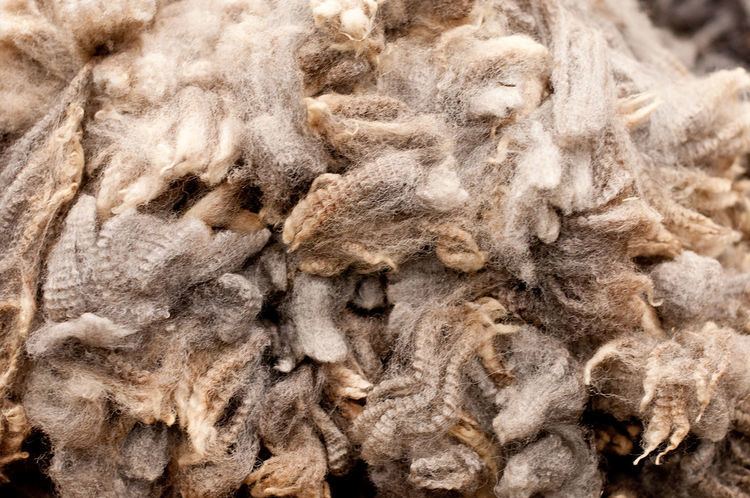Hex triplet #F5F5DC CMYK (c, m, y, k) (0, 0, 10, 4) Source X11 | sRGB (r, g, b) (245, 245, 220) HSV (h, s, v) (60°, 10%, 96%) | |
 | ||
Beige is variously described as a pale sandy fawn color, a grayish tan, a light-grayish yellowish brown, or a pale to grayish yellow. It takes its name from French, where the word originally meant natural wool that has been neither bleached nor dyed, and hence also the color of natural wool. It has come to be used to describe a variety of light tints chosen for their neutral or pale warm appearance.
Contents
- Cosmic latte
- Cream
- Unbleached silk
- Tuscan
- Buff
- Desert sand
- Ecru
- Khaki
- Light French beige
- French beige
- Mode beige
- Beige Theory
- Usage
- The BeigeMainstream Distinction
- In nature
- Metaphor
- References
Beige was used as a color term in the modern sense in France beginning approximately 1855-60; the writer Edmond de Goncourt used it in the novel La Fille Elisa in 1877. The first recorded use of beige as a color name in English was in 1887.
Beginning in the 1920s, the meaning of beige expanded so that it is now also used not only for pale yellowish-brown colors, but also for a wide range of pale brown and light brown shades. Some of more notable of these tints and shades are shown below.
Beige is notoriously difficult to produce in traditional offset CMYK printing due to the low levels of inks used on each plate; often it will print in purple or green and vary within a print run.
Cosmic latte
Cosmic latte is a name assigned in 2002 to the average color of the universe (derived from a sampling of the electromagnetic radiation from 200,000 galaxies), given by a team of astronomers from Johns Hopkins University.
Cream
Cream is the color of the cream produced by cattle grazing on natural pasture with plants rich in yellow carotenoid pigments, some of which are incorporated into the cream, to give a yellow tone to white.
The first recorded use of cream as a color name in English was in 1590.
Unbleached silk
Unbleached silk is one of the Japanese traditional colors in use since beginning in 660 CE in the form of various dyes that are used in designing kimonos.
The name of this color in Japanese is shironeri.
Tuscan
The first recorded use of Tuscan as a color name in English was in 1887.
Buff
Buff is a pale yellow-brown color that got its name from the color of buffed leather.
According to the Oxford English Dictionary, buff as a descriptor of a color was first used in the London Gazette of 1686, describing a uniform to be "A Red Coat with a Buff-colour'd lining".
Desert sand
The color desert sand may be regarded as a deep shade of beige. It is a pale tint of a color called desert. The color name "desert" was first used in 1920.
In the 1960s the American Telephone & Telegraph Company (AT&T) marketed desert sand colored telephones for offices and homes. However, they described the color as "beige". It is therefore common for many people to refer to the color desert sand as "beige".
Ecru
Originally in the 19th century and up to at least 1930, the color ecru meant exactly the same color as beige (i.e. the pale cream color shown above as beige), and the word is often used to refer to such fabrics as silk and linen in their unbleached state. Ecru comes from the French word écru, which means literally 'raw' or 'unbleached'.
Since at least the 1950s, however, the color ecru has been regarded as a different color from beige, presumably in order to allow interior designers a wider palette of colors to choose from.
Khaki
Khaki was designated in the 1930 book A Dictionary of Color, the standard for color nomenclature before the introduction of computers.
The first recorded use of khaki as a color name in English was in 1848.
Light French beige
Light French beige is the color called beige on the pourpre.com website, a color list widely popular in France.
French beige
The first recorded use of French beige as a color name in English was in 1927.
The source of this color is the following website: ISCC-NBS Dictionary of Color Names (1955)--Color Sample of French beige (color sample #57)
Mode beige
Mode beige is a very dark shade of beige.
Two other alternative names for this exact color are drab and sand dune, in use, respectively, since 1686 and 1925.
The first recorded use of mode beige as a color name in English was in 1928.
The color mode beige is a masterpiece of rebranding—taking the color "drab", a color whose name had become a synonym for dullness, and remaking it into the exciting, fun color "mode beige".
Beige Theory
Beige Theory is a social theory coined in 2016 from the popularity of the beige chino. The theory is used to describe societal norms in various activities such as fashion, hobbies and sports.
Usage
"Fifa is Beige"
"They wouldn't understand they are too Beige"
"She does not like ham in her donut because she is Beige"
The Beige/Mainstream Distinction
Beige Theory has often been misunderstood as an observation on mainstream culture, although similar, being beige and being mainstream are not synonymous.
In nature
Fish
Metaphor
Beige is sometimes used as a metaphor for something which is bland, boring or conventional. In this sense it is used in contradistinction to more vibrant and exciting (or more individual) colors.
